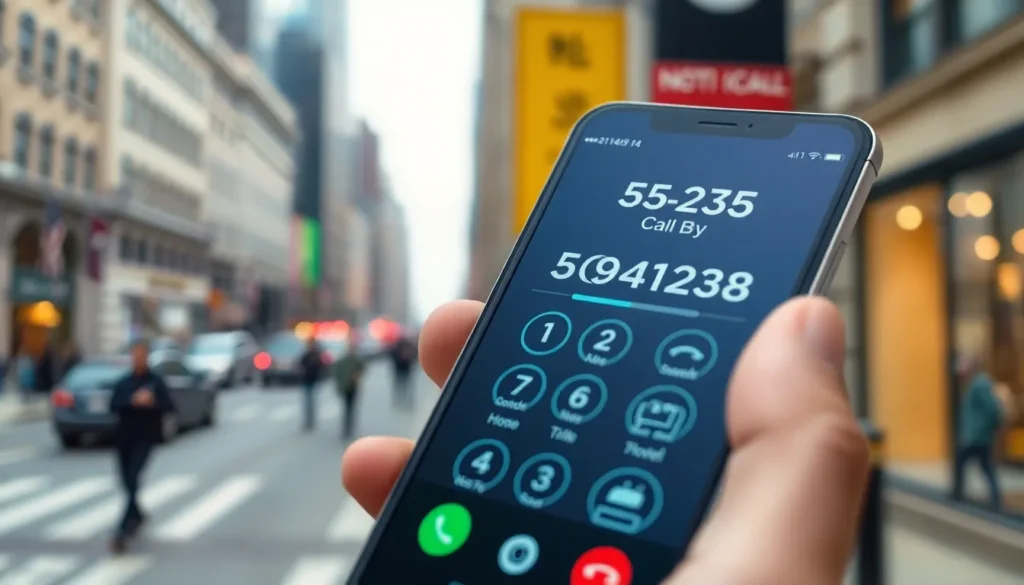In today’s fast-paced digital world, remote desktop access has become the superhero of productivity. Imagine being able to work from your couch, bed, or even that cozy café down the street—all while accessing your office computer like a wizard casting a spell. No more rushing to the office in your pajamas; with remote desktop access, the workday can happen anywhere, anytime.
Table of Contents
ToggleOverview Of Remote Desktop Access
Remote desktop access enables users to connect to a computer or network remotely over the Internet. This technology allows individuals to access files, applications, and resources from any location, making it ideal for remote work. Convenience often ranks high, as employees can work from home, coffee shops, or while traveling.
Security plays a crucial role in remote desktop access solutions. Modern software often incorporates robust encryption methods that protect data during transmission. Various authentication techniques, such as multi-factor authentication, provide an additional layer of security, ensuring that only authorized users gain access.
Multiple platforms offer remote desktop access solutions, each with unique features. For instance, TeamViewer and AnyDesk facilitate easy connections with user-friendly interfaces. Microsoft Remote Desktop is favored by Windows users due to its seamless integration with Microsoft services.
Performance typically varies based on the network connection and software capabilities. High-speed connections enhance user experience, minimizing latency and improving response times. Various tools allow users to adjust settings for optimal performance, depending on connection quality.
Cost often influences the choice of remote desktop access solutions. Pricing structures can range from free options to subscription-based services, catering to diverse budgets and organizational needs. Many providers offer free trials, enabling users to assess functionality before making a commitment.
Remote desktop access serves as a valuable tool in modern work environments. Through flexibility, security, and various options, it supports productivity in remote work settings.
Benefits Of Remote Desktop Access

Remote desktop access offers several advantages that significantly enhance the modern work experience. Flexibility emerges as a key benefit, allowing users to work from virtually anywhere, improving overall productivity.
Improved Productivity
Remote desktop access empowers users to complete tasks efficiently. Users can access necessary applications and files directly from their home or any other location. This seamless connection minimizes downtime associated with travel. Studies show that remote work leads to a 13% increase in productivity due to fewer distractions and a more comfortable work environment. Each user benefits from the ability to stay connected to office resources, enabling continuous workflow.
Enhanced Collaboration
Collaboration improves with remote desktop access. Teams can work together on projects regardless of their physical location. This technology facilitates real-time access to documents, allowing for instant updates and feedback. Enhanced file sharing reduces the delays traditionally caused by email exchanges. Analytics suggest that remote teams experience higher satisfaction and engagement, contributing to better project outcomes. As such, remote desktop solutions foster a more integrated team dynamic.
Cost Savings
Cost savings arise from the adoption of remote desktop access. Organizations can significantly reduce overhead by minimizing office space expenses. Remote access also cuts costs associated with commuting, as employees save time and money. Significant savings stem from the use of cloud solutions, which typically offer scalable pricing and reduced IT infrastructure investments. The potential for decreased employee turnover adds another layer of financial benefit, as remote work options enhance job satisfaction. Overall, these financial incentives make remote desktop access a wise choice for many businesses.
Security Considerations
Security remains a critical aspect of remote desktop access as vulnerabilities can lead to unauthorized access and data breaches. Users must recognize the potential risks and implement best practices to safeguard their systems.
Potential Risks
Unauthorized access poses a significant threat. Cybercriminals often exploit weak passwords and unpatched software. Data interception occurs during transmission if encryption is absent. Public Wi-Fi networks increase exposure to hackers, enabling them to intercept sensitive information. Malware can infect devices linked via remote access protocols, leading to further complications.
Best Practices for Safety
Employ strong passwords that combine letters, numbers, and special characters. Multi-factor authentication should complement passwords, adding an extra security layer. Regularly update software to ensure the latest security patches are applied. Limit access to specific IP addresses, reducing exposure to only trusted networks. Use encrypted connections to safeguard data during transmission. Regular backups are essential for data recovery in case of breaches.
Popular Remote Desktop Access Solutions
Numerous remote desktop access solutions cater to various user needs. These applications simplify the process of connecting to remote systems and enhancing productivity.
Software Options
TeamViewer provides a user-friendly interface along with robust features. AnyDesk excels with low latency and efficient bandwidth usage, ensuring smooth connections. Microsoft Remote Desktop integrates seamlessly into Windows environments, making it a convenient choice for many businesses. Chrome Remote Desktop allows quick access via a web browser, perfect for casual users. Each software option brings unique strengths, catering to diverse preferences and technical requirements.
Comparison of Features
Features vary widely across remote desktop software. TeamViewer offers file transfer capabilities and multi-platform support. AnyDesk boasts a lightweight design with powerful performance in low-bandwidth scenarios. Microsoft Remote Desktop emphasizes security with built-in encryption and access control. Chrome Remote Desktop shines with ease of use for non-technical users. Users can compare these features directly to find the best fit for their specific needs, ensuring an optimal remote access experience.
Remote desktop access has transformed how individuals and teams approach work in today’s fast-paced environment. By providing the flexibility to connect to office systems from anywhere, it empowers users to maintain productivity and collaboration without the constraints of a traditional office setting.
With a variety of secure platforms available, users can choose solutions that best fit their needs while ensuring data protection. As remote work continues to gain traction, embracing remote desktop access will likely remain a crucial strategy for enhancing efficiency and reducing costs in the workplace. Adopting best practices for security further solidifies its value, making it an indispensable tool in the modern digital landscape.










